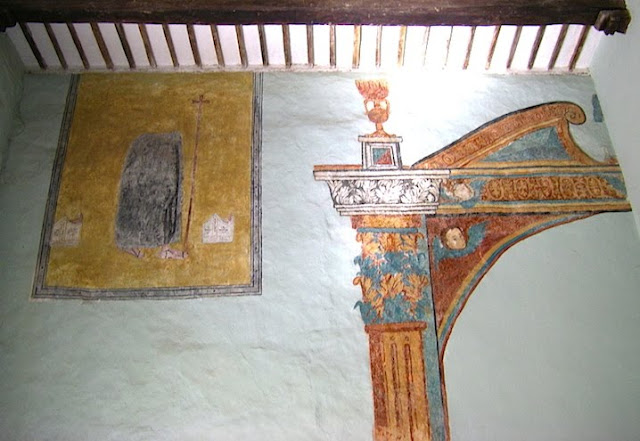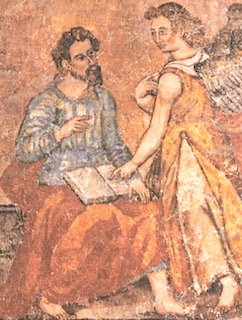We wind up our current series on colonial murals in Yucatán with a visit to 18th century church of Mamá:

Appropriately, the Franciscan founders dedicated their mission to the Virgin of the Assumption, and when the church was taken over by the bishop of Yucatan in the early 1700s, it was expanded to serve as a Marian shrine.
The imposing restored facade is densely ornamented with filigree carving that includes such Marian symbols as the sun, moon, stars and the crown of the Queen of Heaven—motifs that are repeated inside the church.
Starting in 1999, conservation measures* have been under way to restore the colorful, colonial altarpieces along the nave, the majority of which were in poor condition. The restoration work is now complete, transforming this once dowdy interior into a brilliant display of colonial art works and furnishings.
During the conservation process, several religious images were found painted in lunettes above the retablos along the nave. Subsequently restored, they include, among others, a cross, a monstrance, a pierced heart and portrayals of the Lamb of God.
The Sacristy Murals!
Perhaps the most surprising discovery during the restorations was the uncovering of several early colonial frescoes hidden for centuries behind coats of whitewash in the sacristy—part of the original 16th century mission here.
 |
| Archangel and St. Clare |
Reds, blues and ochers color the fragmentary images, which include representations of St. Christopher, St Anthony of Padua and the Virgin Mary.
In addition to painted columns and floral decoration, there are portraits of Franciscans reading and writing, including San Bernardino de Siena and Duns Scotus—the noted defender of the Franciscan doctrine of the Immaculate Conception of the Virgin Mary.
St. Christopher and the Christ Child (fragments)
Another item of special interest in the sacristy is this colorful box retablo also painted with the sun, moon and stars—a further connection with the church patron.
Faint traces of colonial era murals have also been found in the rebuilt cloister, although now deteriorated to the point of being unidentifiable.
text & color images © 2018 Richard D. Perry






































